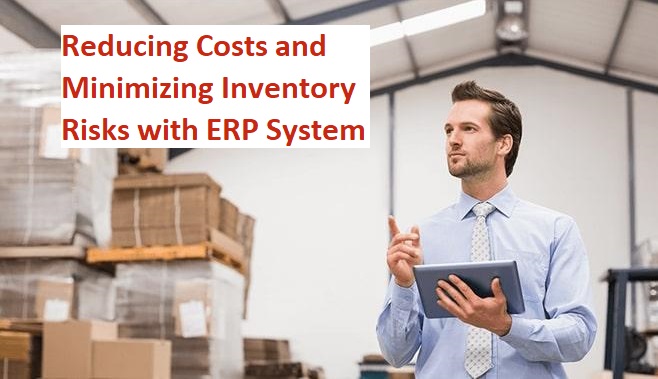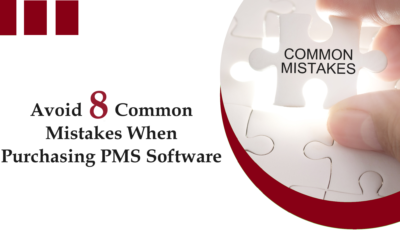
In today’s rapidly evolving business landscape, effective inventory management is more critical than ever. Striking the right balance between maintaining sufficient stock levels to meet customer demands while avoiding excess inventory that ties up valuable resources can be a challenging task. This is where Enterprise Resource Planning (ERP) software steps in, revolutionizing the way businesses handle their inventory. In this article, we’ll delve into how ERP systems can significantly reduce costs and mitigate inventory risks, leading to more streamlined operations and improved bottom-line results.
The Costly Conundrum of Inventory Management
Inventory management has long been a tightrope walk for businesses. Holding excess inventory increases storage costs, risks obsolescence, and leads to cash being tied up that could be used for other investments. On the flip side, inadequate stock levels can result in stockouts, missed sales opportunities, and dissatisfied customers.
Traditionally, managing inventory manually or through disparate systems left room for errors, delayed decision-making, and an incomplete understanding of inventory movements. This made it challenging to align inventory levels with actual demand and supply dynamics, leading to inefficiencies and unnecessary costs.
ERP: A Game-Changer in Inventory Management
Enterprise Resource Planning (ERP) software emerged as a comprehensive solution to these challenges. By integrating various business processes and functions into a single system, ERP empowers businesses with real-time insights, data accuracy, and predictive analytics. This level of integration brings remarkable advantages to inventory management, allowing organizations to reduce costs and minimize risks.
1. Accurate Demand Forecasting
ERP systems leverage historical data, market trends, and predictive analytics to generate accurate demand forecasts. With this foresight, businesses can make informed decisions about inventory replenishment, reducing the likelihood of stockouts and overstocking. This not only avoids the costs associated with stockouts (lost sales, customer dissatisfaction) but also prevents the financial drain caused by excess inventory.
2. Optimal Inventory Levels
ERP systems provide visibility into the entire supply chain, enabling businesses to maintain optimal inventory levels at various stages. This prevents overstocking, which can lead to storage costs, obsolescence, and markdowns. Simultaneously, it prevents understocking, which can result in rushed orders, expedited shipping costs, and missed opportunities.
3. Improved Supplier Collaboration
ERP systems facilitate seamless communication with suppliers through automated order processing and real-time data sharing. This enables just-in-time inventory strategies, reducing the need for businesses to hold excessive safety stock. With better supplier collaboration, businesses can negotiate favourable terms, such as lower order quantities and lead times, leading to cost savings.
4. Streamlined Warehouse Operations
Integrating ERP with Warehouse Management Systems (WMS) optimizes inventory storage, picking, packing, and shipping. Efficient warehouse operations reduce labour costs, minimize picking errors, and enhance order fulfilment speed. This not only cuts down operational expenses but also ensures customer satisfaction by delivering orders accurately and on time.
5. Minimized Data Entry Errors
Manual data entry is prone to errors that can lead to inaccuracies in inventory records. ERP systems automate data capture, reducing the chances of mistakes and ensuring that inventory levels are consistently accurate. This accuracy is crucial for making informed decisions and avoiding costly discrepancies.
6. Real-time Tracking and Reporting
ERP software offers real-time visibility into inventory movements and performance through intuitive dashboards and reports. This empowers businesses to identify slow-moving items, excess stock, and other inefficiencies promptly. By acting on these insights, businesses can take corrective measures before costs escalate.
Conclusion
In today’s competitive business environment, the role of ERP software in reducing costs and minimizing inventory risks cannot be overstated. The ability to accurately forecast demand, optimize inventory levels, enhance supplier collaboration, streamline warehouse operations, minimize data entry errors, and provide real-time insights empowers businesses to make informed decisions that directly impact the bottom line.
By embracing ERP-driven inventory management, businesses gain a strategic advantage in their markets. They are better equipped to respond to customer demands, adapt to changing market conditions, and allocate resources efficiently. Ultimately, the adoption of ERP not only results in reduced costs and minimized risks but also lays the foundation for sustained growth and profitability.
In a world where efficiency and responsiveness are paramount, ERP-driven inventory management emerges as a powerful tool for businesses to optimize their operations, foster innovation, and achieve long-term success. So, take the leap and explore how ERP can transform your inventory management, positioning your business for a more cost-effective and risk-mitigated future.





0 Comments